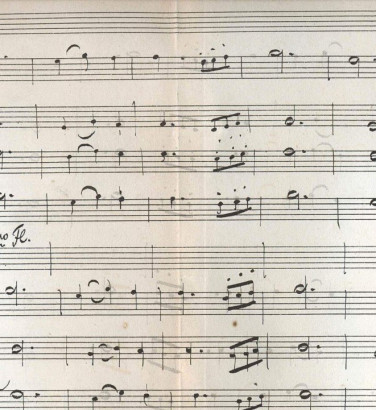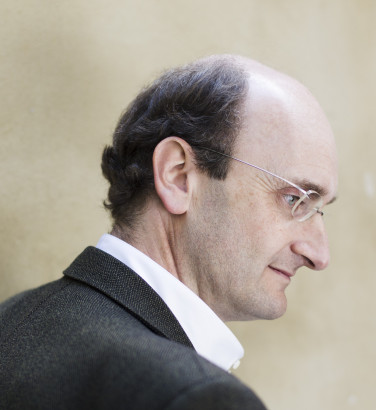
Lili Boulanger et les autres: female French composers
20 May 2024
News Story
From left to right: Louise Farrenc, Lili Boulanger and Cécile Chaminade
We are increasingly aware today of overlooked women in history, and music is no different. Composition was long considered a man’s domain, with very few women achieving any kind of recognition in the field until the 19th century; it would take a good deal longer (arguably only in the last couple of decades) for them no longer to be considered the exception. Even in a society as progressive as France (or one which would consider itself as such), female composers were historically believed capable of writing pretty little trifles and not much more.
It is perhaps unsurprising that the turning point came via the teaching profession, a realm in which women were long established. By far the most significant of these pedagogues was Nadia Boulanger, who in the course of a long career taught figures as diverse as Aaron Copland, Quincy Jones, Astor Piazzolla, Daniel Barenboim, Phillip Glass and Burt Bacharach. Her elder sister Lili Boulanger had made history in 1913 as the first woman to win the coveted Prix de Rome but, plagued by increasingly poor health during World War One, she died only five years later. Thanks largely to Nadia’s efforts, however, her reputation today far exceeds the relatively modest body of some two dozen works she left.
To understand how the Boulanger sisters became such trailblazers in their native country and beyond, let us start by rewinding the clock, all the way back to the 12th century. The information which survives about any musician of this period is scant to say the least, but the names of eight female trouvères (or troubadours) have come down to us. They are admittedly dwarfed by their 250-odd male counterparts, but given the gender norms of the time, we should perhaps consider ourselves lucky to be able to celebrate them at all.
This being before the advent of surnames, trouvères (male and female alike) are largely known by their first names only, hence Dame (Lady) Margot and Dame Maroie. It is very likely they were followed by more female composers since lost to history, but for the most part, the next ones of whom any record still exists are referred to by their married names.
There is one major exception to this rule. Born into a family of musicians and instrument makers (chiefly harpsichords), Elisabeth Jacquet appended her husband’s surname to her own when they were married. Marin de La Guerre came from a respected family of organists, and as Elisabeth Jacquet de La Guerre she could draw on the renown of both their names in musical circles. When she was all of five, her skills had been recognised by the King himself – Louis XIV, the Sun King – and she would later gain a place in the royal court. Unusually for female composers of the period, she wrote for any number of genres; she was particularly lauded for her harpsichord music, and in 1694 became the first woman to compose an opera in France. Given the richness of her family heritage, it was probably a foregone conclusion that she should be musical herself, but for a woman to become a professional musician was, at the time, truly exceptional.
In the 18th century, it became increasingly common for France's female composers to be recognised by their married names. Mme Papavoine may have become known for her music before her marriage: a 1755 gazette which names her as a composer (in equal measure to her husband) lists some of her works under her maiden name of Mlle Pellecier, but no record of her first name survives. The same is true of Mme Ronssecy, though her being active around the time of the French Revolution does give us a little more historical context: a composer and harpist, she moved to England in the 1790s. It seems reasonable to deduce that she – along with swathes of the French aristocracy, among whom the harp was a highly fashionable instrument – was fleeing the bloody aftermath of the republican uprising. Another harpist and composer, Mme Delaval, also established herself in London at this time, where she is known to have performed in at least one of Salomon’s Haydn concerts in the 1791-92 season.
The 19th century would see many more female composers come to prominence. One of the first was Louise Farrenc, who met with quite some success despite several disadvantages she could do nothing about. Being a near contemporary of Hector Berlioz, something of a poster-child for the Romantic age, can't have helped (especially given the size of his ego), and back-handed compliments along the lines of “very good, for a woman” were becoming commonplace for female composers. That said, she showed no inclination to write opera – historically a favourite French genre – instead taking on the men at their own game and composing three highly-praised symphonies. The last of these was performed by the SCO in June 2024.
Among the female composers who did turn their hand to opera was Sophie Gail, herself a singer. Her Les deux jaloux (Two jealous men) was the first comic opera by a female composer to be produced in France, though she struggled to replicate its success. She became better known for her songs, but even these are little known today. Cécile Chaminade’s, on the other hand, are still occasionally heard in recitals, and it is known that she was well-liked among her contemporaries: encouraged by Chabrier and Saint-Saëns, she was nicknamed ‘my little Mozart’ by Bizet, and – moving beyond French borders – her skill as a pianist is supposed to have reminded Liszt of Chopin. Symbolic of changing attitudes within the French musical establishment, she was commissioned by the Paris Conservatoire to compose an exam piece for flute in 1902, which she later orchestrated as the Flute Concertino (also performed by the SCO in June 2024).
More general acceptance of women among the students and faculty of the Conservatoire finally opened up greater opportunities for women, including the Boulanger sisters. Les Six, a group of young (mostly French) composers who came to prominence a few years later, included a woman among their number: this was Germaine Tailleferre, another extraordinarily prolific composer across several genres, not least soundtracks for the newly emerging medium of film.
Many female composers have followed in Tailleferre’s footsteps in embracing new opportunities. Emilie Levienaise-Farrouch is among the most prominent to write for the cinema today, including 2023’s All of Us Strangers, while Christine Ott has parallel careers as a composer and player of the ondes Martenot, an early electronic instrument with a sound not dissimilar to the theremin. With works such as Le plein du vide (by the Chinese-born French composer Xu Yi) firmly on the school curriculum – it was among the works selected for the music baccalauréat in 2006 and 2007 – there can be no doubt that female composers are finally on the ascendant.
Related Stories
![]()
Mozart and the symphony
22 December 2025
Stuck between the symphonies of Haydn and Beethoven, where do Mozart's fit in?![]()
Unfinished symphonies
15 December 2025
Your starter for ten: besides Schubert, who has an unfinished symphony to their name?![]()
Andrew Manze: "I've always loved Viennese waltzes and polkas"
1 December 2025
Our Principal Guest Conductor is really looking forward to conducting our Viennese New Year concerts!


